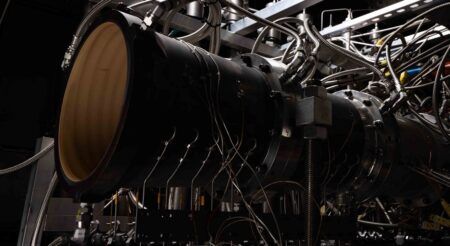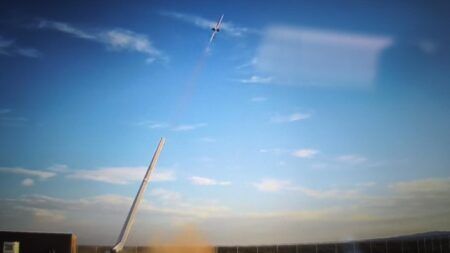NASA’s is to conduct research this August to advance supersonic flight, with a series of flights carried out over the Florida launch site (Cape Canaveral) of the agency’s famous space program.
Teams and aircraft from NASA’s Armstrong Flight Research Center in California and Langley Research Center in Virginia – two agency centers that conduct extensive aeronautical research – will deploy to Kennedy Space Center in Florida for a near two-week flight series campaign.
The historic spaceport will play host to the second series of sonic booms in atmospheric turbulence (SonicBAT) flights, continuing from 2016’s successful supersonic research flights flown at Edwards AFB. SonicBAT helps NASA researchers better understand how low-altitude atmospheric turbulence affects sonic booms, which are produced when an aircraft flies at supersonic speeds, or faster than the speed of sound. The upcoming flight series is a key initiative in validating tools and models that will be used for the development of future quiet supersonic aircraft, which will produce a soft thump in place of the louder sonic boom.
“In SonicBAT, we’re trying to figure out how much atmospheric turbulence changes sonic booms,” said Ed Haering, SonicBAT’s principal investigator at Armstrong.
The initial series of SonicBAT flights provided NASA with data on the effect of atmospheric turbulence on sonic booms in a dry climate. The upcoming flights will continue that effort by collecting data in the same fashion to measure the effect of the humid climate of Florida.
“Turbulence can make sonic booms quieter, or it can make them louder. Last summer we tested in the hot, dry climate of Edwards Air Force Base. We know that humidity can make sonic booms louder, so we need to test some place wetter, and Kennedy fits that bill,” Haering said.
Sonic boom signature data will be collected from these tests using audio equipment to capture noise levels both above and below the turbulence layer, which will provide a comparison of the sonic boom both before and after it travels through atmospheric turbulence.
To do this, a NASA Armstrong F-18 will take off from Kennedy’s Shuttle Landing Facility and fly off the coast of Cape Canaveral at an altitude of 32,000ft and will fly a designated flight path where it will exceed Mach 1, the speed of sound, and produce a sonic boom.
Meanwhile, NASA also will fly a TG-14 motorized glider, equipped with a wingtip microphone, at an altitude between 4,000ft and 10,000ft, which is above the low-altitude turbulence layer. At the test point, the TG-14 will temporarily shut down its motor and glide. This will eliminate any unnecessary noise, ensuring that the wingtip microphone will pick up a clean, accurate sonic boom signature before it travels through any turbulence.
To collect signatures of sonic booms that travel through the turbulence layer, NASA – along with partners Wyle Laboratories and Gulfstream Aerospace – will arrange two microphone arrays on the ground at Kennedy, each with 16 microphones to collect data.
The project aims to collect data in three different conditions, including low turbulence, medium turbulence and significant turbulence, to obtain a stronger understanding of how the variations impact sonic booms.
To monitor these conditions, NASA meteorologists will be on-site using anemometers to measure wind speed, a sonic wind profiler to measure wind conditions at low altitude, and a flux sensor to measure changes due to humidity.
NASA is expecting to fly the F-18 two-to-three times per day, starting Monday, August 21, and will conclude the end of the month or early September, focusing on collecting data on a targeted minimum of 33 sonic booms.
While communities near Kennedy and Cape Canaveral Air Force Station may be able to hear traces of the sonic booms being produced over the NASA center, Haering said residents have no reason to worry: “At the altitudes we are flying, sonic booms from aircraft have never been dangerous to people, animals or buildings, but they can be startling.”
Haering added, “We have carefully planned our flights so that there is little chance that people in larger communities such as Titusville to the west, or Cocoa Beach to the south, will be disturbed. Residents might hear a distant sound similar to a rumble of thunder. If the actual winds at the time of our tests are much different from predicted, they might hear a boom sound like those heard when the space shuttle landed. That may be startling, but there is no reason to be alarmed.”
Sonic booms can be heard as the result of shockwaves created by aircraft flying through the atmosphere faster than the speed of sound. The Federal Aviation Administration, or FAA, currently prohibits supersonic flight over land due to previously flown supersonic aircraft and their associated loud, disruptive sonic boom.
Decades of NASA research in supersonic flight, however, has now resulted in a unique aerodynamic design and technological advances for an aircraft that will mitigate the sonic boom, making it considerably quieter.
In February 2016, NASA awarded a contract to Lockheed Martin for a preliminary design of a quiet supersonic X-plane called the Low-Boom Flight Demonstration aircraft (LBFD). This effort recently completed a successful preliminary design review, and NASA will soon initiate the next phase of the LBFD concept through a new contract competition.
This second phase will focus on the detailed design and fabrication of the aircraft. When completed, the goal will be to fly the X-plane over communities throughout the country to test and demonstrate a quiet sonic thump. These flight tests will also provide data to the FAA for the development of potential noise standards for future supersonic flight over land.
July 26, 2017




